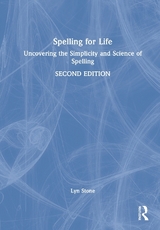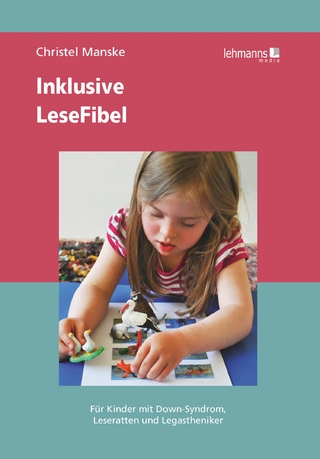
Spelling for Life
Routledge (Verlag)
978-0-415-85692-8 (ISBN)
- Titel erscheint in neuer Auflage
- Artikel merken
It explains that spelling is the manipulation of symbols according to agreed-upon patterns that produce predictable results. Spelling errors also fall into sets of predictable patterns. Success in spelling is not a product of intelligence. Many people struggle to spell due to coping strategies developed in place of explicit instruction. What gives spelling its ‘complex’ veneer is the fact that different ways of thinking are required at different levels from word to word. Some words can be spelt as they sound, others have to be visually memorised and some rely on knowledge of core rules about word-structure. A lot of words require more than one strand of knowledge. This book makes clear which strand needs to be applied in different situations.
Often pupils who can read and express themselves competently nevertheless find spelling difficult. False assumptions about spelling, such as believing the English language is complex and/or irregular, damage confidence and lead to reluctance to even attempt to spell correctly.
Spelling For Life enables teachers and pupils to:
learn what the common spelling coping strategies are
gain insights into undoing poor spelling habits
work together to notice patterns not only in regular spelling, but also in words which on the surface seem to break the spelling rules
practise successful spelling strategies, progressing from simple to complex words rapidly and with confidence.
Using a synthesis of theory, research and teaching experience, the fascinating nature of English spelling is systematically teased out. The examples and exercises offer an encouraging, accessible way to implement the programme of study and strive to reveal the beauty of spelling. Aided by example lessons, progressive assessments, unique tools and extensive practice lists, this highly acclaimed overview of spelling succeeds in developing critical thinking and confidence when reading and spelling. It can be used in conjunction with any established phonics programme.
Lyn Stone is a linguist and literacy and language specialist in Victoria, Australia Lyn's website www.linguistlearning.com provides resources for teachers and other professionals interested in linguistics in the classroom.
1. Broken Rules and Word Stories
2. Word Families
3. Homophones
4. Mnemonics
5. Counting Syllables
6. Affixes
7. The Spelling Formula
8. The Difference Between Vowels and Consonants
9. What Consonants Say
10. Illegal Letters
11. The Single Vowels
12. The Letter ‘y’
13. Final Silent E, Jobs 1-3
14. Job 4 of Silent 'E' (a.k.a. ‘consonant plus–le’)
15a. The Wicked Sisters and Other Wacky R’s
15b. More Wacky R's 15c. Final Silent E and Wacky R's
16. The Vowel Generator
17. Strong and Weak Syllables
18. Schwa
19a. To Double or not to Double?
19b. When the Final Syllable is Like a 1.1.1 Word
20. Final Silent E and Suffixes
21. The return of illegal ‘i’
22. The Suffix Generator
23. More Fascinating Patterns
24. Some Delightful Lists
Appendix 1. Forgive me, Scotland
Appendix 2. The Orders Of Intelligence
Appendix 3. The Triangle Game
Appendix 4. Why Not just Make Spelling Simpler?
| Erscheint lt. Verlag | 29.10.2013 |
|---|---|
| Zusatzinfo | 4 Line drawings, black and white; 9 Halftones, black and white; 55 Tables, black and white; 13 Illustrations, black and white |
| Verlagsort | London |
| Sprache | englisch |
| Maße | 174 x 246 mm |
| Gewicht | 635 g |
| Themenwelt | Schulbuch / Wörterbuch |
| Sozialwissenschaften ► Pädagogik ► Schulpädagogik / Grundschule | |
| ISBN-10 | 0-415-85692-2 / 0415856922 |
| ISBN-13 | 978-0-415-85692-8 / 9780415856928 |
| Zustand | Neuware |
| Informationen gemäß Produktsicherheitsverordnung (GPSR) | |
| Haben Sie eine Frage zum Produkt? |
aus dem Bereich



